#christopher trumbo
Text
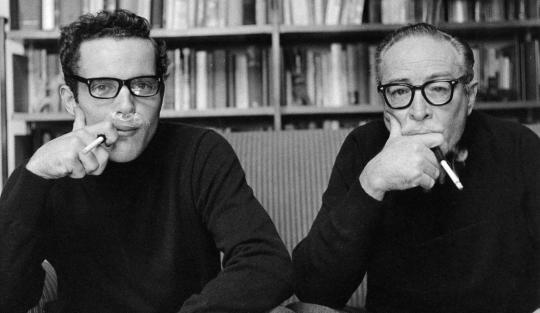
Dalton Trumbo, December 9, 1905 – September 10, 1976.
With his son, Christopher.
33 notes
·
View notes
Text
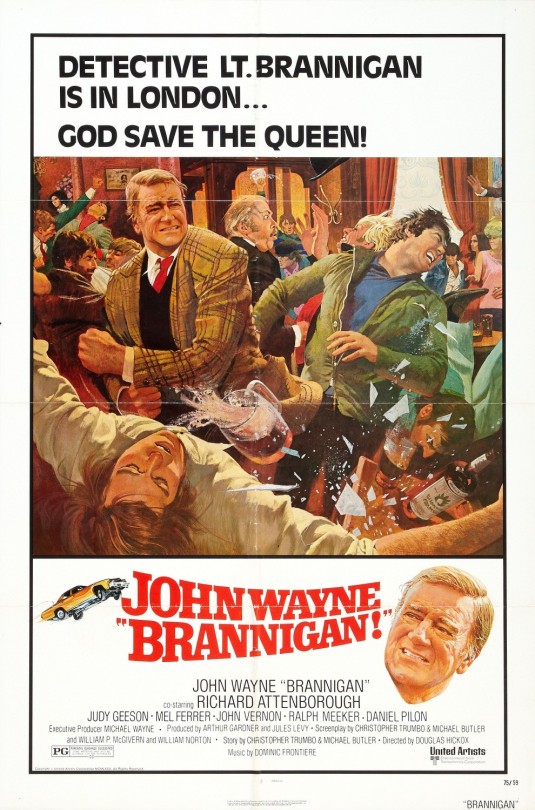
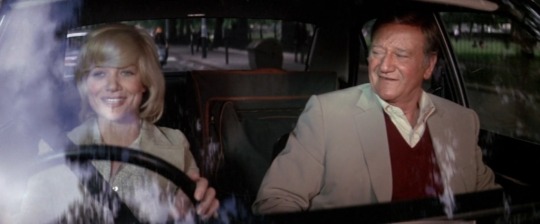
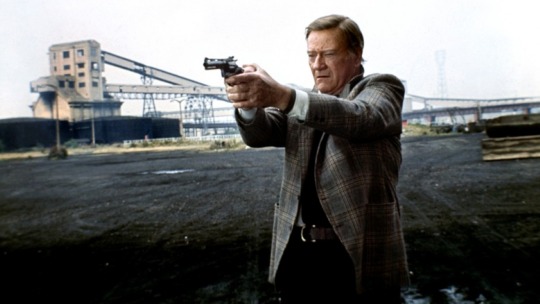



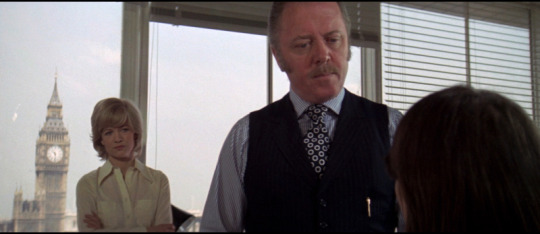


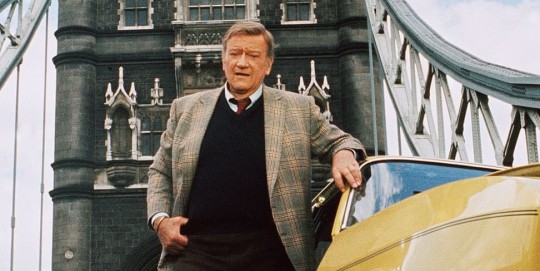
Brannigan (1975)
"Well, if it was up to me, I'd get some men out thumping on the streets, passing out some 'e pluribus unum'. That's what ninety percent of police work is today."
"The murder rate in your country, I'm sure, gives ample testimony to your superior police methods."
#brannigan#1975#british cinema#crime film#douglas hickox#christopher trumbo#michael butler#william p. mcgivern#john wayne#richard attenborough#judy geeson#john vernon#mel ferrer#daniel pilon#john stride#james booth#ralph meeker#barry dennen#del henney#lesley anne down#arthur batanides#ok so for the record i despise John Wayne the person; i also don't particularly rate JW the film star‚ excepting for a very few#special films (The Man Who Shot Liberty Valance probably topping that list). normally i wouldn't make a special effort to see any of his#films but this has been on my radar for some time: i mean it's Wayne in 70s London‚ fighting crime that's represented by classic tv#character actors like Don Henderson‚ James Booth and Brian Glover. heaven! or it would be‚ but this is a flabby‚ kind of dumb mess#partly that's on director Hickox (hard to believe he made the sublime Theatre of Blood a couple years earlier) and partly that's a bad#script which repeatedly hammers on about the cultural differences between usa and uk in an endless attempt to be funny#but the main issue is Wayne‚ too old and sickly to even begin to convince as a tough cop who can win the eye of beautiful Judy Geeson#please. gross. intriguing for sights of 70s London and that wonderful supporting cast but otherwise completely disposable#oh and some fun americans to spot too! Barry Dennen! that at least was a delightful surprise. but yeah not much to recommend this really
4 notes
·
View notes
Text
The books currently looking beseechingly up at me from my cart:
Within These Walls (Ania Ahlborn)
A Choir of Ill Children (Tom Piccirilli)
Shipwrecks (Akira Yoshimura)
Frankenstein in Baghdad (Ahmed Saadawi)
Nazareth Hill (Ramsey Campbell)
Between Two Fires (Christopher Buehlman) (this may or may not have been one of the reasons I ranted about medieval horror always being Black Death...) (but I still desperately want to read it!)
The House Next Door (Anne Rivers Siddon)
The Dangers of Smoking in Bed (Mariana Enriquez)
Mouthful of Birds (Samanta Schweblin)
Johnny Got His Gun (Dalton Trumbo)
Flowers of Mold (Ha Seong-Nan)
I Remember You (Yrsa Sigurdardottir)
Tender is the Flesh (Agustina Bazterrica)
Eileen (Ottessa Moshfegh)
The Shapeshifters (Stepan Spjut)
Hex (Thomas Olde Heuvelt)
The Corpse Exhibition (Hassan Blasim)
Her Body and Other Parties (Carmen Maria Machado)
The Last One (Alexandra Oliva)
The Twenty Days of Turin (Giorgio De Maria)
The Ancestor (Danielle Trussoni)
The Girl Next Door (Jack Ketchum)
Pretty Girls (Karin Slaughter)
Get in Trouble (Kelly Link)
Moon of the Crusted Snow (Waubgeshig Rice)
I Have a Bad Feeling About This (Jeff Strand)
The Hunger (Alma Katsu)
Apartment 16 (Adam Nevill)
The only authors on the list I've read are Adam Nevill, Jack Ketchum, and Ramsey Campbell. Someone please tell me half of these are just awful and not even worth considering? 😅
I'm trying to expand my reading beyond the obvious and the well-known, especially looking towards queer authors, women, and authors in translation (especially those from languages/cultures not as frequently encountered in the genre in English). For the last, I'm also considering the two volumes of The Valancourt Book of World Horror Stories.
I'm going to starve.
Or I can try to figure out how to make a book stew...
2 notes
·
View notes
Text
My 100 best movies of all time
As a start, this is a top 100 I made back in 2018.
To make things tasty, the first rule I followed was "no more than one movie per director". The second one was "don't get mad trying to order that top 100, just write it down".
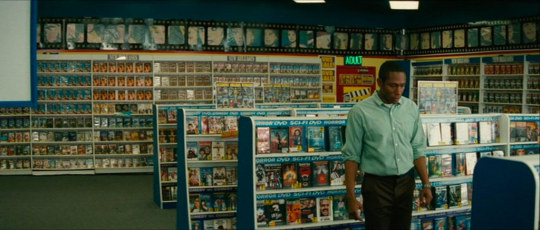
I told myself a lot of lies about the fact that this top could change any day but I'm too lazy to make a new one every day. So here I am, stuck with this one :)
BEST MOVIES OF ALL TIME ACCORDING TO ME
(with no particular order)
Kiss Me Deadly (1955, Robert Aldrich)
The Professionals (1966, Richard Brooks)
Indagine su un cittadino al di sopra di ogni sospetto (1970, Elio Petri)
Queimada (1969, Gillo Pontecorvo)
C'eravamo tanto amati (1974, Ettore Scola)
Reservoir dogs (1992, Quentin Tarantino)
The Killing (1956, Stanley Kubrick)
Notorious (1946, Alfred Hitchcock)
The Asphalt Jungle (1950, John Huston)
Les enfants du paradis (1946, Marcel Carné)
Kiss Me Stupid (1964, Billy Wilder)
Sullivan's Travels (1941, Preston Sturges)
The Shop Around The Corner (1940, Ernst Lubitsch)
Rio Bravo (1959, Howard Hawks)
The Man Who Shot Liberty Valance (1962, John Ford)
The Conversation (1974, Francis Ford Coppola)
Le trou (1960, Jacques Becker)
Dead Poets Society (1989, Peter Weir)
Le salaire de la peur (1953, Henri-Georges Clouzot)
Judex (1963, Georges Franju)
The Departed (2006, Martin Scorsese)
The Prestige (2006, Christopher Nolan)
Unbreakable (M. Night Shyamalan)
Le cercle rouge (1970, Jean-Pierre Melville)
Il buono, il brutto, il cattivo (1966, Sergio Leone)
Curse of the Demon (1957, Jacques Tourneur)
Singin' In The Rain (1952, Stanley Donnen - Gene Kelly)
Hero (1992, Stephen Frears)
It's a Wonderful Life (1946, Frank Capra)
All About Eve (1950, Joseph L. Mankiewicz)
Das indische Grabmal (1959, Fritz Lang)
Le voleur (1967, Louis Malle)
Born Yesterday (1950, George Cukor)
Ben-Hur (1959, William Wyler)
Seven Samurai (1954, Akira Kurosawa)
Ginger e Fred (1986, Federico Fellini)
Small Time Crooks (2000, Woody Allen)
Barton Fink (1991, Joel and Ethan Coen)
Batman returns (1992, Tim Burton)
I due superpiedi quasi piatti (1977, Enzo Barboni)
The Goonies (1985, Richard Donner)
Carlito's Way (1993, Brian De Palma)
French Connection (1971, William Friedkin)
The Incredible Shrinking Man (1957, Jack Arnold)
Gremlins 2 (1990, Joe Dante)
The Bad and the Beautiful (1952, Vincente Minnelli)
Warlock (1959, Edward Dmytryk)
The Unknown (1927, Tod Browning)
Johnny Got His Gun (1971, Dalton Trumbo)
El ángel exterminador (1962, Luis Buñuel)
Le grand blond avec une chaussure noire (1972, Yves Robert)
Down by Law (1986, Jim Jarmusch)
Jurassic Park (1993, Steven Spielberg)
Ladri di biciclette (1948, Vittorio De Sica)
Man without a Star (1955, King Vidor)
Peter Ibbetson (1935, Henry Hathaway)
City Lights (1931, Charlie Chaplin)
Il mio nome è Nessuno (1973, Tonino Valerii)
Excalibur (1981, John Boorman)
Dance of the Vampires (1967, Roman Polanski)
Au hasard Balthazar (1966, Robert Bresson)
Be Kind Rewind (2008, Michel Gondry)
The Fly (1986, David Cronenberg)
Mononoke hime (1997, Hayao Miyazaki)
Les Douze Travaux d'Asterix (1976, René Goscinny - Albert Uderzo)
Touch Of Evil (1958, Orson Welles)
Star Wars (1977, George Lucas)
The Empire Strikes Back (1980, Irvin Kershner)
Groundhog Day (1993, Harold Ramis)
The Front (1976, Martin Ritt)
Big (1988, Penny Marshall)
El secreto de sus ojos (2009, Juan José Campanella)
Amores perros (2000, Alejandro González Iñárritu)
El espinazo del diablo (2001, Guillermo del Toro)
The Man in the White Suit (1951, Alexander Mackendrick)
Village of the Damned (1960, Wolf Rilla)
The Thing (1982, John Carpenter)
Ms. 45 (1981, Abel Ferrara)
The Gunfighter (1951, Henry King)
Copland (1997, James Mangold)
Terminator 2 (1991, James Cameron)
Starship Troopers (1997, Paul Verhoeven)
Le Schpountz (1938, Marcel Pagnol)
12 Monkeys (1995, Terry Gilliam)
Man on the Moon (1999, Milos Forman)
Imitation of Life (1959, Douglas Sirk)
The Most Dangerous Game (1932, Ernest B. Schoedsack and Irving Pichel)
A Perfect World (1993, Clint Eastwood)
Dances with Wolves (1990, Kevin Costner)
Gentleman Jim (1942, Raoul Walsh)
Good Will Hunting (1997, Gus Van Sant)
Elephant Man (1980, David Lynch)
Casablanca (1942, Michael Curtiz)
The Man with the Golden Arm (1955, Otto Preminger)
The Killers (1946, Robert Siodmak)
Punch-Drunk Love (2002, Paul Thomas Anderson)
L'Atalante (1934, Jean Vigo)
La classe américaine (1993, Michel Hazanavicius and Dominique Mézerette)
Back to the Future (1985, Robert Zemeckis)
Un singe en hiver (1962, Henri Verneuil)
1 note
·
View note
Text
Der Don ist tot
Der Don ist tot
Story: Nicht zum ersten Mal wird wieder der kühle junge Mann, der nur widerwillig im Unterweltgeschäft mitmacht, der neue Boss. Doch es entbrennt ein Krieg um die schöne Helena und eine böse Lady sorgt dafür, dass sich Don Angelo und Kronprinz Frank sich in dasselbe Mädchen verlieben und darüber in einen blutigen Streit geraten. Ein Verräter schürt geschickt den Konflikt es bauen sich…

View On WordPress
#Action#Al Lettieri#Amerika#Angel Tompkins#Anschlag#Anthony Quinn#Attentat#Außenseiter#Bandenkrieg#Barry Russo#Charles Cioffi#Christopher Trumbo#Clankriminalität#Der Pate#Drama#Drogen#Erbe#Ermittlungen#Explosion#Familie#Fehde#Frederic Forrest#Gangster#Gangsterboss#Hal B. Wallis#Halbwelt#Jerry Goldsmith#Jo Anne Meredith#Konflikt#Krieg
0 notes
Photo
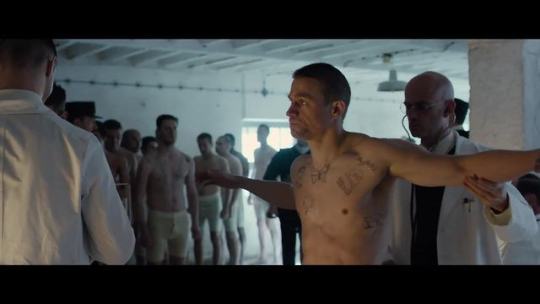
"Now what's the son of two school teachers doing in a place like this?"
Papillon (2017)
#papillon#michael noer#aaron guzikowski#Henri Charrière#dalton trumbo#lorenzo semple jr.#charlie hunnam#rami malek#eve hewson#roland møller#michael socha#yorick van wageningen#ian beattie#christopher fairbank#joel basman#nikola kent#brian vernel
35 notes
·
View notes
Text
Favorite Movie and Television Productions About Old Hollywood

Below is a list of my favorite costume movie and television productions about the Golden Age of Hollywood (in chronological order of release):
FAVORITE MOVIE AND TELEVISION PRODUCTIONS ABOUT OLD HOLLYWOOD
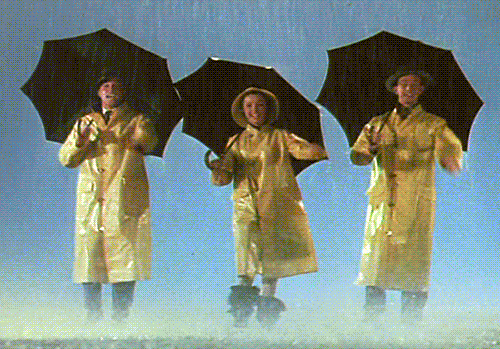
"Singin' in the Rain" (1952) - Gene Kelly, Donald O'Connor and Debbie Reynolds starred in this musical classic about Hollywood's transition from silent films to talkies. Kelly co-directed with Stanley Donen.

"Moviola: The Scarlett O'Hara War" (1980) - Tony Curtis starred as producer David O. Selznick in the second episode of the miniseries, "Moviola". The television movie featured Selznick's search for the right actress to portray the leading character in his movie adaptation of "Gone With the Wind".

“Quennie” (1987) - Mia Sara and Kirk Douglas starred in two-part miniseries, which is an adaptation of Michael Korda’s 1985 biography of actress Merle Oberon. Larry Peerce directed.

"Who Framed Roger Rabbit?" (1988) - Robert Zemeckis directed this adaptation of Gary Wolfe's 1981 novel, "Who Censored Roger Rabbit?", in which a 1940s private detective who must exonerate a cartoon star "Toon" for the murder of a wealthy businessman. Bob Hoskins, Charles Fleischer and Christopher Lloyd starred.

"The Rocketeer" (1991) - Joe Johnston directed this adaptation of Dave Stevens’ comic book series about a stunt pilot who stumbles across a prototype jetpack that allows him to become a high-flying masked hero in 1938 Los Angeles. Bill Campbell, Jennifer Connolly, Alan Arkin and Timothy Dalton starred.

"The Cat’s Meow" (2001) - Peter Bogdanovich directed this fictionalized account of William Randolph Hearst’s November 1924 weekend cruise celebrating Thomas Ince’s birthday. The movie starred Kirsten Dunst, Edward Hermann, Eddie Izzard and Cary Elwes.

"The Aviator" (2004) - Martin Scorsese produced and directed this biopic about mogul Howard Hughes' experiences as a filmmaker and aviator between 1927 and 1947. Oscar nominee Leonardo DiCaprio starred.

"Hollywoodland" (2006) - Adrien Brody, Diane Lane and Ben Affleck starred in this intriguing tale about a private detective's investigation into the life and death of actor George Reeves. Allen Coulter directed.
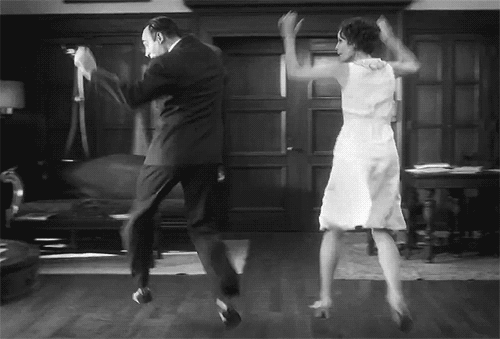
"The Artist" (2011) - Michel Hazanavicius wrote and directed this Academy Award winning movie about a silent screen star and the disruption of his life and career by the emergence of talking pictures. Oscar winner Jean Dujardin and Oscar nominee Bérénice Bejo starred.
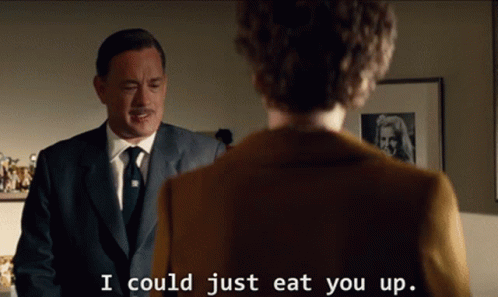
"Saving Mr. Banks" (2013) - John Lee Hancock directed this superb and emotional tale about author P.L. Travers and producer Walt Disney’s tug-of-war over the development of the 1964 movie, "Mary Poppins". Emma Thompson and Tom Hanks starred.
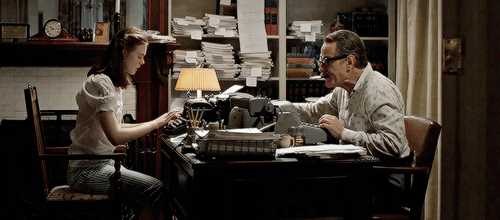
"Trumbo" (2015) - Oscar nominee Bryan Cranston starred in this biopic about screenwriter Dalton Trumbo and his troubles after being jailed and blacklisted for being a member of the Communist Party. Directed by Jay Roach, Diane Lane and Helen Mirren co-starred.

"The Last Tycoon" (2016-2017) - Billy Ray created this television adaptation of F. Scott Fitzgerald's unfinished novel about a Hollywood producer during the mid-1930s. Matt Bomer starred.

"Once Upon a Time . . . in Hollywood" (2019) - Quentin Tarantino wrote and directed this excellent tale about a fading actor and his stunt double struggling to regain success in the film industry during the final year of Hollywood’s Golden Age in 1969 Los Angeles. Oscar nominee Leonardo Di Caprio, Oscar winner Brad Pitt and Oscar nominee Margot Robbie starred.
#period drama#period dramas#costume drama#old hollywood#golden age of hollywood#movies#television#singin in the rain#gene kelly#donald o'connor#debbie reynolds#moviola#moviola: the scarlett o'hara war#the scarlett o'hara war#tony curtis#queenie#mia sara#kirk douglas#who framed roger rabbit#walt disney studios#who framed roger rabbit?#Bob Hoskins#charles fleischer#stanley donen#robert zemeckis#the rocketeer#bill campbell#alan arkin#jennifer connelly#timothy dalton
20 notes
·
View notes
Text
“new normal”
On March 9, 2020, Phil Murphy announced a state of emergency, and I transformed staying home and watching TV from a hobby into a full-time occupation. Since then I have watched dozens of hours of not just Netflix but a variety of on-screen content. But only Netflix has a clear list.
So, I am going to review the best/worst/most interesting movies I’ve been watching on a possibly weekly basis for your enjoyment! You may be wondering, why just movies, why not shows? Well, you will see that I watch kind of a lot, and I had to draw the line somewhere, especially since I rewatch show episodes over and over. But I will throw shout-outs to Anne With An E, Alias Grace, Kim’s Convience, Self-Made, End of the F***ing World, and Never Have I Ever as the shows I remember getting up-to-date on over the past couple months.
So anyway, the fun thing about movies I watch is that I choose them for really arbitrary reasons, and a lot of times I get to the end like why did I watch that? But sometimes I’m like thank you Netflix for bugging me until I watched it even though I didn’t think I would enjoy. Here’s what I’m going to pick from
March (FORTY-SEVEN MOVIES can you believe):
The Danish Girl
The Theory of Everything
My Week with Marilyn
The First Wives Club
Limitless
The Croods
The Guernsey Literary and Potato Peel Pie Society
What’s Eating Gilbert Grape
Always Be My Maybe
Mute
Nappily Ever After
Burlesque
The Ballad of Buster Scruggs
Philadelphia
Outbreak
John Carter
Joseph: King of Dreams
Julie & Julia
Saving Mr. Banks
Chappaquiddick
Open Season
Super Dark Times
Barry
Death at a Funeral
The Platform
Valentine’s Day
The Rainmaker
Rounders
Christopher Robin
The Other Guys
Spider-Man: Into the Spider-Verse
Mowgli: Legend of the Jungle
Jerry Maguire
Olympus Has Fallen
The Hateful Eight
War Machine
The Siege of Jadotville
The Kindergarten Teacher
Extremely Wicked, Shockingly Evil, and Vile
My Girl
The Hundred-Foot Journey
Ex Machina
Race to Witch Mountain
Semi-Pro
Batman Begins
The Dark Knight
Kill Bill (1&2)
April (Down to 38, mostly because I got roped into watching this REALLY LONG series with my friend):
The Laundromat
The Irishman
The Fundamentals of Caring
Young Adult
Hell or High Water
Secret Obsession
The Players Club
The Boy Who Harnessed The Wind
Sleeping With Other People
Minority Report
All the Bright Places
True Grit
Miss Americana
Crouching Tiger, Hidden Dragon
Hancock
Bad Boys
Miracle
Taxi Driver
Murder Mystery
Steve Jobs
Obvious Child
Frances Ha
Spring Breakers
The Incredible Jessica James
Get Him to the Greek
Harold and Kumar Go to White Castle
War Horse
Dolemite is My Name
Pan’s Labrynth
Nacho Libre
Don’t Think Twice
Cadillac Records
The Breaker Upperers
The Adventures of Tintin
The Good, The Bad, and The Ugly
The Place Beyond the Pines
Deadline: Sirf 24 Ghante
The Dirty Dozen
Blade Runner? Kind of? Netflix removed it from their catalog before I finished but I WANTED TO FINISH!
May (38 again, with a shout-out to the show Crashing for being a mini-series the length of a movie, and Avatar for being the greatest thing to grace any screen anywhere):
Good Time
The Willoughbys
Molly’s Game
As Good As It Gets
Salt
Promised Land
Mary Poppins Returns
Road to Perdition
Tootsie
Tinker, Tailor, Soldier, Spy
The Half of It
Fun With Dick and Jane
Ace Ventura: Pet Detective
For Love or Money
Mud
There Will Be Blood
Spenser Confidential
The Money Pit
Mystic River
Coffee & Kareem
The Score
Swiss Army Man
Menashe
Mudbound
The Last Thing He Wanted
The King
The Two Popes
Turbo
First They Killed My Father
Babel
Knock Down The House
Mirror Mirror
Becoming
The Iron Lady
The Last Samurai
Beasts of No Nation
The Florida Project
Okja
June (Only 17, but shows of the month was The Assassination of Gianni Versace, Jeffrey Epstein, The Politician, 13 Reasons Why, and Hollywood—quite a few!):
Roma
The Sapphires
Casper
Uncut Gems
Malcolm X
The Perks of Being a Wallflower
The Lincoln Lawyer
The Lovebirds
Jersey Boys
The Longshots
First Match
Roxanna Roxanne
The Spiderwick Chronicles
Extraction
Trumbo
See You Yesterday
Juwanna Mann
1 note
·
View note
Text
TRUMBO

Although there are a few film clips and some home movies and archival photos, TRUMBO (2017) is primarily a collection of talking heads, but O! what talk! Adapted from Dalton Trumbo’s son, Christopher’s, play about his father, the film features generous excerpts from his remarkably literate letters on everything from the blacklist to the cost of installing an intercom system to his daughter’s nursery. Primarily it is the story of a great screenwriter forced to work undercover after he refused cooperate with the House Un-American Activities Committee and answer questions he considered an unconstitutional invasion of privacy. Trumbo acknowledged that he was one of the lucky ones; he had a great deal of work produced through fronts and under pseudonyms, albeit at a much lower rate than he was making before the blacklist. He even won two Oscars for work credited to others. I wish there had been more of a sense of history. Once he gets his first post-blacklist credits for EXODUS and SPARTACUS (both 1960), the film pretty much ends. I also wish there had been some mention of the ulterior motives for the investigation (publicity for the congressmen, fighting the unions and career advancement for many of the friendly witnesses and in the case of Robert Taylor, covering up his gay past). And there’s one unsupported claim (that although the blacklisted writers never turned films into propaganda pieces they did change certain film archetypes, though what they are is never explained). But the writing in his letters is terrific, filled with passion and even wit, and some of the readings, by Nathan Lane, Joan Allen, Brian Dennehy, David Strathairn and others are exquisite. There also are some good interview subjects, one of whom, actress-writer Jean Rouverol, deserves a documentary of her own. I include the trailer so you can get a sample of some of the wonderful words in the film:
youtube
1 note
·
View note
Photo
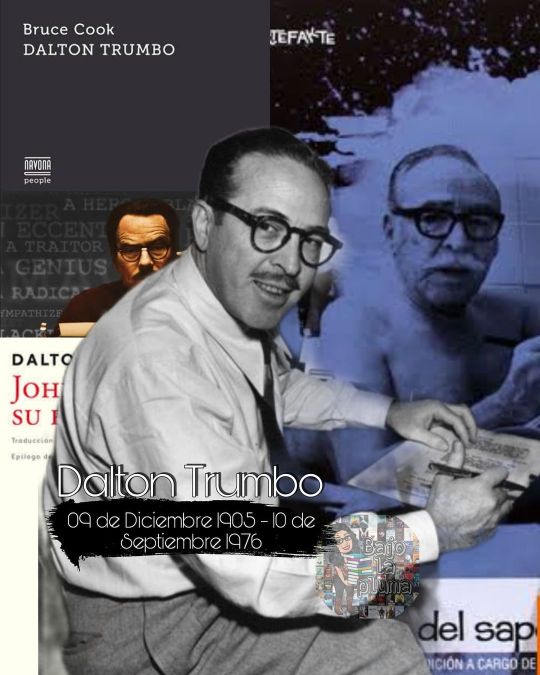
Hoy en efemérides literarias del día 10 de Septiembre, recordamos a Dalton Trumbo, 45 años después de su muerte. Fue un novelista, guionista y director de cine estadounidense perseguido por el macarthismo (fue uno de los Diez de Hollywood). Se vio obligado a testificar ante del Comité de Actividades Antiestadounidenses en 1947, dentro de la búsqueda de elementos comunistas en la industria del cine. Debido a esto, tuvo que usar seudónimos en sus trabajos. Entre las películas cuyos guiones escribió destacan Johnny cogió su fusil, Papillon, Espartaco, Éxodo y dos que recibieron el premio Óscar por su labor: Vacaciones en Roma y El bravo. Su propio hijo, Christopher Trumbo —siguiendo las huellas de su padre como guionista— y el director Peter Askin (Lío en la Habana, Company Man) han querido rendir homenaje a su figura, dedicándole el conmovedor documental Trumbo y la lista negra. En el documental, actuales estrellas de Hollywood como Michael Douglas, Dustin Hoffman, Donald Sutherland, Liam Neeson, Paul Giamatti o Josh Lucas ponen voz a las cartas y fragmentos escritos por el propio Dalton, aclamado en la actualidad, por muchos, como el mejor guionista de aquel momento. Además de la intervención de estos testimonios, el documental combina sus extraordinarias cartas con imágenes de archivo, clips de sus películas y entrevistas a testigos del entorno de Trumbo, uno de los escritores favoritos de Hollywood #libro #recomendaciones #libroinstagram #bookstagram #libros📚 #librosymaslibros #amoloslibros #leer #amoleer #pontealeer #lector #lectores #esdelectores #lectora #lectoras #esdelector #unlectorentiende #unlectorentendera #amantedeloslibros #amantesdeloslibros #bajolapluma #efemerides #efemeridesliterarias #daltontrumbo #luctuoso https://www.instagram.com/p/CTqCkjKvwxz/?utm_medium=tumblr
#libro#recomendaciones#libroinstagram#bookstagram#libros📚#librosymaslibros#amoloslibros#leer#amoleer#pontealeer#lector#lectores#esdelectores#lectora#lectoras#esdelector#unlectorentiende#unlectorentendera#amantedeloslibros#amantesdeloslibros#bajolapluma#efemerides#efemeridesliterarias#daltontrumbo#luctuoso
0 notes
Text
Disney Begins Production on “The One and Only Ivan”


Production has commenced at Pinewood Studios outside London on “The One and Only Ivan,” a live-action/CG hybrid adaptation of the children’s book by Katherine Applegate directed by Thea Sharrock (“Me before You”). The screenplay is by two-time Independent Spirit Award winner Mike White (“Pitch Perfect 3,” “The School of Rock”) based on Applegate’s award-winning book and the producers are Oscar® and three-time Golden Globe® winner Angelina Jolie (“First They Killed My Father,” “Maleficent”), the late Allison Shearmur (“Solo: A Star Wars Story,” “Cinderella”) and Brigham Taylor (“Christopher Robin,” “The Jungle Book”).
“The One and Only Ivan” stars Academy Award® and Golden Globe® nominee and four-time Emmy® winner Bryan Cranston (“Trumbo,” “Breaking Bad”); Ramon Rodriquez (“Iron Fist,” “The Defenders”); Arianna Greenblatt (“A Bad Moms Christmas”); Indira Varma (“Patrick Melrose,” “Exodus: Gods and Kings”); and Eleanor Matsuura (“Wonder Woman,” “Sherlock”).
The film features the vocal talents of Angelina Jolie, Academy Award® winner Sam Rockwell (“Three Billboards outside Ebbing, Missouri,” “Moon”) and Critics’ Choice Award winner Brooklynn Prince (“The Florida Project”). Oscar® and three-time Golden Globe® winner Helen Mirren (“Winchester,” “The Queen”) and Emmy® and Golden Globe winner Danny DeVito (“Dumbo,” “It’s Always Sunny in Philadelphia”) have also signed on to voice characters in the film.
Based on the true story of a uniquely-talented gorilla and the other animals who share a communal habitat at a suburban shopping mall, “The One and Only Ivan” is an unforgettable tale about the beauty of friendship, the power of visualization and the significance of the place we call home. Applegate’s book, a #1 New York Times’ bestseller, has won numerous awards, including the Newberry Medal for the most distinguished contribution to American literature for children in 2013.
1 note
·
View note
Photo

Praising Miss Kitty by Susan Doll
Ginger Rogers won an Academy Award as Best Actress for the title role in 1940’s KITTY FOYLE, beating out Katharine Hepburn in THE PHILADELPHIA STORY, Joan Fontaine in REBECCA and Bette Davis in THE LETTER. Film historians, movie critics and other commentators on classic movies often feel the need to qualify her win or make excuses for it, because KITTY FOYLE lacks the critical reputation of the other three films. (Martha Scott was also nominated for OUR TOWN, but, however good she may have been, she lacks the status of the other nominees.) Historians and critics note that Rogers was starring in a drama after a decade of popular musicals with Fred Astaire; thus, industry attention was focused on her. The implications are that as a typical melodrama, KITTY FOYLE was not award material and that Rogers won because she was stretching her star image.
While iconic melodramas such as Douglas Sirk’s 1950s Technicolor masterworks get their due, more typical “women’s weepies” like KITTY FOYLE are looked down on. Even the article on KITTY FOYLE in the TCM database is dismissive in tone, referring to it as “a sterling example of that love-, marriage-, and babies-obsessed genre.” The writer expresses surprise that “a political martyr” like Dalton Trumbo could be responsible for the screenplay. I’ll admit that the depictions of relationships and women’s problems seem out of date, while the dialogue and situations drip with sentiment. But, that is the nature of the genre, which was one of the few to embrace women’s interests and issues. And, Rogers, who is in every scene, drives the film. She deserved her Oscar for infusing every frame of KITTY FOYLE with her energy and charisma, perfectly illustrating a star’s ability to elevate any material. Watch KITTY FOYLE, which is currently streaming on FilmStruck, to judge for yourself.
The narrative revolves around Kitty’s dilemma: Should she marry a doctor from her own class and live a traditional life, or move to another country with the wealthy man she has always loved. The latter comes with a catch—he is married to someone else. The story unfolds in flashback as a young, working-class Kitty lands a job with publisher Wyn Stafford, played by the eternally boyish Dennis Morgan. The pair fall in love, but Stafford does not have the courage to break with his wealthy family. Kitty moves from Philadelphia to New York where she becomes involved with struggling doctor Mark Eisen, played by James Craig. Stafford tracks her down in New York, which begins a pattern for Kitty of pursuing passion with Wyn or stability with Mark. Though packaged in the sentiment and social mores of 1940, Kitty’s dilemma is as familiar to young women now as it was then. Should a woman pursue a personal relationship based on passion and adventure, or one grounded in stability and constancy?
KITTY FOYLE represented Rogers’s first serious starring role, and it elevated her career. However, when she was first offered the script, she did not want to do it because it was too sentimental. The film was based on a novel by Christopher Morley titled Kitty Foyle: The Natural History of a Woman, which included events that would never have made it into a Hollywood movie during the Golden Age. But, in the film, Kitty does face tragedies that make for good melodrama. Rogers’s mother, Lela, recognized the script’s potential and persuaded her that this was an excellent career move. RKO, Rogers’ studio, played a major part in this career move. As the Golden Age fades further and further into the past, the role of the studios in managing the careers of their big stars becomes lost to the history books. While Rogers may have had the luxury of voicing her concerns about the role, she was under contract to RKO and subject to their decisions. If the studio really wanted her to do the film, she would have had to do it.
As was typical of the era, RKO handled the shift in Rogers’s career brilliantly through publicity and promotion. Studio execs determined the story was about the typical American girl so that it would appeal to a variety of women, and that idea drove the publicity. The copy on some posters asserted, “If there isn’t one in your family, there’s one across the street, or facing you across the desk, or in the subway or streetcar.” To remind movie fans of the working-class connotations of Rogers’s star image, RKO sent her to Grand Central Station to receive an award from 2,000 New York secretaries. Likely prompted by the studio’s press agents, Time magazine declared, “Miss Rogers, with her shoulder-length tresses, her trim figure, her full lips, her prancing feet and honest-to-goodness manner, is the flesh-and-blood symbol of the all-American working girl.”
Even Rogers’s personal life could be spun to parallel the character of Kitty Foyle. Recently divorced from Lew Ayres, she was shown in newspapers and magazines with several eligible actors, as though she were trying to make up her mind.
Despite her iconic Depression-era movies with Fred Astaire, I believe Rogers’s career peak was post-Astaire. Beginning with BACHELOR MOTHER in 1939, she did her best work in the 1940s. While retaining a consistent star image as the working-class girl who could take care of herself, she revealed a versatility in comedies, dramas and the occasional musical.
I love Hepburn and Davis, but they couldn’t dance.
65 notes
·
View notes
Text
New-to-me Films of 2017
2017 was a wild year for me personally, a lot of ups and a lot of rough and stressful downs. But I've somehow managed to survive all of it and these are the 360 movies that I watched this year that helped keep me afloat while life came at me.
The Conspirators (1944)
See You in the Morning
The Man Who Could Work Miracles
No Blade of Grass
Tortilla Flat
The Dark Tower
Ocho apellidos vascos
Cannery Row
Irene
Fingers at the Window
Hidden Figures
Agatha (1979)
Madness of the Heart
Deception
The Ref
The Seven-Per-Cent-Solution
Marriage on the Rocks
Pennies from Heaven
Ben-Hur (2016)
Make Way for a Lady
You Got to Move
Freedom on My Mind
Mr. Lucky
Zero Motivation
Cabin in the Sky
The Terminal Man
Cousin Bette
House of Women
Hell or High Water
Caged
The Dressmaker
Condemned Women
Suffragette
Tin Men
Coma
Blazing Saddles
Fame
Ridicule
Days of Wine and Roses
Tokyo Drifter [Tôkyô nagaremono] (1966)
Get Out
The Mosquito Coast
Indignation
The Life Aquatic with Steve Zissou
Two Weeks Notice
The Legend of 1900
ChickLit
The Cosmic Man
The People vs. Fritz Bauer
Cinemania
The LEGO Batman Movie
Submarine
Little Men (2016)
Jauja
O.J.: Made in America
I Dream Too Much
Eyewitness
The Edge of Seventeen
Queen of Katwe
An American Werewolf in London
A Country Called Home
The Witness
Come What May
Renoir
Newtown
Ocho apellidos catalanes
Ahora o nunca
Ithaca
A Dangerous Woman
Tenemos que hablar
Woman in Gold
Il a déjà tes yeux
Gone Too Far
The Daughter
Lolo
20th Century Women
Altamira
Afterglow
Wild Oats
The Break-Up
King Kong Escapes
Moonlight
For Pete’s Sake
Middle of the Night
Christopher Strong
Summer Magic
Laughter in Paradise
Village of Daughters
Wonder Woman
Little Miss Thoroughbred
Steel Against Sky
At the Circus
Banjo (1947)
Convicts 4
Bad Little Angel
Love (1919)
Sunnyside (1919)
The Connection
Midnight Mary
The Madwoman of Chaillot
The Secret Life of Pets
The Opposite Sex
The Children’s Hour
All That Heaven Allows
The Small Back Room
Indiscretion of an American Wife
The Old Man and the Sea
Death in Venice
Desire (1936)
The Seventh Sin
The Song of Songs
When in Rome
He Ran All the Way
Rancho Notorious
The Sign of the Ram
Isle of Fury
The Boss Baby
Seven Keys to Baldpate
I Am Not Your Negro
Withnail & I
My Name is Julia Ross
Il rosso segno della follia
Flamingo Road
Buona Sera, Mrs. Campbell
Tea and Sympathy
Dementia 13
Places in the Heart
Freaks
Come September
Gypsy
So Well Remembered
The Window
Magnificent Obsession
Secret People
They Won’t Forget
Denial
The Rain People
Freebie and the Bean
Portrait of Jason
Song of the Sea
Hide in Plain Sight
Daughter’s of the Dust
Carol
Oh, Hello on Broadway
Torch Song Trilogy
The Immortal Life of Henrietta Lacks
The Year of Living Dangerously
Badlands
Nobody Lives Forever
Countdown
Faults
The Search for General Tso
Amore tra le rovine
Pretty Ugly People
Miss Firecracker
America America
Koch
The Emigrants
Everything Must Go
Tour de Pharmacy
The Best of Everything
Ladybug Ladybug
Two Weeks in Another Town
Cynara
Thirst (1929)
Clive of India
The Light that Failed
Dunkirk
Their Finest
Friends and Lovers
That Old Feeling
Bedknobs and Broomsticks
Alias Nick Beal
Panic in Year Zero!
A Life of Her Own
What Every Woman Knows
The Incredible Jessica James
Tropic Thunder
Let’s Do It Again
Born to Kill
The Blackbird (1926)
The Naked Jungle
The Girl From Missouri
The Unguarded Hour
Uncle Vanya (1957)
The King Steps Out
Five Graves to Cairo
Today We Live
The Wife Takes a Flyer
Between Two Women
Until They Sail
Romanoff and Juliet
Fast and Furious (1939)
Brother John
Dangerous
These Wilder Years
Dreamboat
Doctor, You’ve Got to Be Kidding!
Tight Spot
Twenty Million Sweethearts
Something of Value
Star of Midnight
The Sea Gull
So Big!
The Purchase Price
All I Desire
Morgan!
The Beautiful Cheat
Young Catherine (1991)
Camelot
The Feminine Touch
No Time for Comedy
Kind Lady
Biography of a Bachelor Girl
Janie
Desire Me
Scandal at Scourie
Her 12 Men
The Law and the Lady
Eyes in the Night
Condemned
Pretty Baby
Remember?
The Hard Way
Strange Lady in Town
L'aveu
Two Guys from Milwaukee
Gunman in the Streets
Term of Trial
Guns of Darkness
Hearts Divided
The Fixer
Viaggio in Italia
Menashe
The Bride’s Play
Gaby
Little Evil
Lost in Space
Logan
The Electric Horseman
Finding Vivian Maier
The Five Heartbeats
Beginners
Carousel
The Scapegoat
Fracture
The Hippopotamus
Beauty and the Beast (2017)
Christine
Mum, Dad, Meet Sam
Walking with the Enemy
Cézanne et moi
The Shining
Yves Saint Laurent (2014)
Innerspace
Jackie Brown
The Dracula Saga (1973)
Mandela: Long Walk to Freedom
The Big Sick
My Father the Hero
The Squid and the Whale
Milk
The Two Faces of January
Dracula’s Dog
What We Do in the Shadows
Hoffa
Inside Man
Kumu Hina
Flash of Genius
Nono, het Zigzag Kind
Count Dracula (1970)
CBGB
The Meyerowitz Stories (New and Selected)
Is That You?
Wedding Doll
Seven Sweethearts
Brainstorm
Blade Runner 2049
Madam Satan
Madchenjahre einer Konigen
Popstar: Never Stop Never Stopping
Design for Scandal
Give a Girl a Break
Long Lost Father
Slums of Beverly Hills
Begin Again
Performance
Broadway Ballyhoo
The Monster (1925)
Packed in a Trunk: The Lost Art of Edith Lake Wilkinson
Casino
Honolulu (1939)
Willard (1971)
Ben (1972)
Fantastic Beasts and Where to Find Them
Güeros
Gremlins
The Salesman (2016)
Donnie Darko
Balalaika
It’s a Great Feeling
One Of Us
Little Dieter Needs to Fly
I Was a Communist for the FBI
Blast of Silence
Nightcrawler
Loving Vincent
Scent of a Woman
Pushover
Ah-ga-ssi (The Handmaiden)
Tender Comrade
Fehér isten (White God)
Florence Foster Jenkins
Marshall
The Limehouse Golem
Made in Dagenham
A Serious Man (MY 4,000th FILM!)
Ann Vickers
Cinderella Liberty
Paddington
John Garfield (2002)
Kiss Kiss Fingerbang
Night Mayor
Green Fire
Mermaids
Jeopardy (1953)
Coco
Luna Park
The Dead
Bernice Bobs Her Hair
Mudbound
Saturday Night Fever
Shield for Murder
The Black Balloon
Consolation Marriage
Period of Adjustment
Married Bachelor
Ask Me, Don’t Tell Me
Kriminal
Akeelah and the Bee
The Tenth Man (El Rey del Once)
Feu Mathias Pascal
Star Wars: The Last Jedi
Spider-Man: Homecoming
Beatriz at Dinner
Keep Your Powder Dry
The Shape of Water
The Best House in London
Trumbo
Latitude Zero
Homecoming
Tall Story
Any Wednesday
Cass Timberlane
A Scandal in Paris
Peyton Place
Betrayed
The Prodigal
Bachelor in Paradise
A Big Hand for the Little Lady
8 notes
·
View notes
Text
Corona and the Myth that’s Called ‘Goodwill’

Most people are so determined to keep cheerful during these terrible times that many have invoked the mythical spirit of public goodwill displayed by British citizens during World War 2.
Give me a break!
As French Algerian novelist, Albert Camus suggests in ‘The Plague’, an escalating crisis like the Coronavirus pandemic produces the best and worst in us all.
Personally, I find notorious villains far more engaging than milk-and-water saints and such a man was Jewish Londoner Harry Dobkin, a delinquent who murdered, then dismembered his estranged wife and buried her remains on a bomb site in a vain attempt to make her look like a war casualty.
According to both Murderpedia and Steemit, when the charred, mummified remains of the former Miss Rachel Dubinski were almost coincidentally unearthed at the height of the London ‘Blitz’ in July 1942 they had been lying below the ruins of the Vauxhall Baptist Chapel for between 12 - 15 months.
I will leave you to read the full details at the links provided above as here I prefer to examine the clever, if now old-fashioned forensic techniques employed to identify the corpse and trace the murderer.
It was a superb piece of team sleuthing, led first by pathologist Dr Keith Simpson who discovered the deceased had died by strangulation; then the police, whose records showed she had been reported missing by her sister, Polly who in turn led them to Rachel’s dentist, Barnett Hopkin.
Finally, writes the author of the account on Murderpedia, “Miss Mary Newman, the head of the Photography Department at Guy's, superimposed a photograph of the skull on to a photograph of Rachel Dobkin, a technique first used six years earlier in the Buck Ruxton case. The fit was uncanny. The bones found in the crypt were the mortal remains of Mrs Rachel Dobkin”.
Most improbably, the Dobkins’ awful story became the stuff of a fictionalised short crime film, ‘The Drayton Case’, whose stars included John Le Mesurier, now best remembered for his role in the BBC TV situation comedy ‘Dad's Army’ and which in a roundabout way brings me back to base.
------
Blood Libels, Then and Now
The feeling that succeeding generations fiercely sanctify and protect their forebears’ memory has been reinforced this week by social media chat about the early 20th century Beilis Affair.
The real story and character of Menachem Mendel Beilis and the ordeal he suffered at the hands of the Czarist Russian authorities on false accusations of ritual murder were used as the basis for the multi prizewinning novel ‘The Fixer’ by Bernard Malamud which in turn became a film. This was directed by John Frankenheimer and the screenplay was written by Dalton Trumbo, among the ‘Hollywood Ten’ imprisoned and then blacklisted for putative Communist sympathies.
I am sure that this was no coincidence as Beilis’s story will have resonated hugely with Trumbo for many reasons. Some years ago, the screenwriter’s life story was enshrined on film. It needs figures like his son, Christopher, also a film maker to explain to others like the descendants of Mendel Beilis why and how a factual documentary is quite different from a fictive piece of art. Certainly they won’t listen to me!
-------------
The debate takes me to the monstrous artistic scandal of the week, the unveiling of the so-called ‘nouveau baroque’ painting, ‘The Martyrdom of Saint Simonino of Trento, for Jewish Ritual Murder’.
Whatever Italian artist, Giovanni Gasparro and his legion fans may say, the real power of the work is neither in its fine draughtsmanship and exquisite colouration, nor its astute pre-Easter and pre-Passover timing: It lies firmly in the evident glee with which he has depicted the anti-Jewish stereotypical characters in the false, hate-filled story.
The Italian episode was vastly worse than the Beilis Affair, involving Jews being forced to make false confessions to murder and then being burnt at the stake.
Gasparro, according to his online biography, enjoys the official patronage of UNESCO, the Italian state and many churches. Further, he boasts a huge social media following: At the last count, more than 2,000 people had reacted to the controversial work on his Facebook page, while it produced 6.2K comments and 1.4K shares.
I do hope that someone persuades Gasparro that if he wishes to honour his faith in paint, there are a million other ways to do so.
The current pandemic has also produced ‘mini’ libels: While a ‘New York Times’ op-ed compared the Corona quarantine to an IDF military curfew on Palestinians in 2002 without mentioning suicide bombings, the Palestinian Authority initially equated Israel with the virus and only after a long silence, did it admit to cooperating with Israel during the emergency. By then, of course, more damage had been done.
Corona as the Theatre of the Absurd
Try as I may, I cannot find any well-known recent commentators who have referred to Camus’s novel, ‘The Plague’. This is especially surprising in Israel where the great master of absurdist philosophy and art is said to be universally revered.
Professor David Ohana remarks in his work, ‘Israel and Its Mediterranean Identity’ that Camus experienced the Vichy regime’s treatment of its Jews “close at hand through the family of his wife Francine, his schoolmates, neighbors, and fellow intellectuals … Most of Camus’s friends at that period in Algeria were Jews”.
André Cohen, his family doctor became “a victim of the fascist plague that was spreading in Algeria: only two percent of the Jewish doctors were permitted to work in their profession, and there was a similar quota in governmental positions. When the decrees were imposed in Oran, Dr Cohen had to stop working as a doctor”.
Ohana muses “… was Dr Cohen, the enlightened Jewish doctor, Camus’s model for Dr Rieux, the fighting doctor in ‘La Peste (The Plague)’, the outlines of which he began to commit to writing at that time? …
“Camus, who was influenced by ‘Moby Dick’, needed a symbol that would embody the subject he wished to describe in his allegorical novel. The plague of typhus that was raging in the town of Tlemcen gave him his inspiration. In 1941, at the time of the plague, he wrote in the newspaper ’Paris- Soir’, for which he worked, a short story that sketched out the main outlines of the plot of ‘The Plague’, which were fully developed about six years later”.
The past three-four months have indeed seen our global and virtual village turn into a huge stage depicting a strange, absurdist universe that no-one can yet fully interpret or explain. It now remains to be seen if any leading Jewish writers, be they in Israel or the Diaspora, will return Camus’s compliment and write something worthy of his enduring legacy – and the plague that’s irrevocably changed modern times.
© Natalie Wood (01 April 2020)
0 notes
Text
Being Towards Death in the Highest Gear

While Welles may have eulogized the genre with 1958's self-deprecating Touch of Evil, Lewis christened its rebirth a decade earlier with Gun Crazy, leading the genre's charge into a more chaotic and intensely introspective period. -- Christopher Justice [1]
Wroom, wroom, bang, bang.
These onomatopoetic words, often associated with the infantile, always seem to come to me when thinking of the right words for discussing 1950′s pulp film-noir. It was François Truffaut’s decision to include such words in the beginning of his review of a film by Samuel Fuller, and it is my decision to do the same in this essay about Gun Crazy (1950) by Joseph H. Lewis, another king of the B. The wonderfully straight-forward title of Lewis’ film -- which is, one might add, the more popular title in comparison to the alternative but equally outrageous Deadly Is the Female -- seems to outline its central themes: guns and craze. In this case, the latter does not only indicate psychic disintegration but also social and existential rapidity, that is, the hurry within man and his society, the being in the highest gear. Departing from the film-noirs which transcend the story by obfuscating narrative and plot, while resembling the film-noirs which transcend the story by simplifying narrative and plot, Gun Crazy never feels difficult or ambiguous due to the craze which reaches from the story to the level of form. It is evident to any viewer of the film that Gun Crazy can be grasped quite quickly as a three-act story, and this fact only emphasizes the depth of its wroom-wroom-bang-bang craze.
It begins with the juvenile yet ominous theft as a young boy (played by the young Russ Tamblyn, the future Twin Peaks star!) breaks the glass of a showcase of a gun store. His crime leads him to court which sends him to a boarding school. The gist of the first act concerns the boy’s return as a young man who has spent some time at the army after getting out of the boarding school. Accompanied by his two childhood friends, whose passion for guns was never as intense but neither was their disapproval of violence, the young man, named Bart, played by John Dall, visits a carnival where he encounters an alluring gunfighter the like he has never seen: mainly because she’s a she. The gunslinger from the opposite sex turns out to be a femme fatale who goes by the androgynous name Laurie, played by Peggy Cummins. The second act begins with the couple’s serene co-existence whose harmony is soon -- abruptly to the spectator, one might add -- interrupted due to Laurie’s ever-growing, demanding taste for the luxurious life, leading the duo eventually to the life of crime as bandits. Their happy life ends with the fatal heist of a meat packing factory whose failure puts a stop to their short-lived success. The third and final act depicts their constant run from the law which culminates in their death in the misty fields of desolation and poignant serenity.
Due to its obvious allusions to the strongly romanticized account of the criminal life of Bonnie and Clyde, Gun Crazy is easily associated with the great number of films taking inspiration from the legend, including Lang’s You Only Live Once (1937), Penn’s Bonnie and Clyde (1967), and Altman’s Thieves Like Us (1974). Yet it seems to me that Lewis’ film is best understood in connection not only to these “public enemy” stories but also to cinematic stories of mad love in general, that is to say, films such as Sjöström’s The Outlaw and His Wife (1918, Berg-Ejvind och hans hustru), Godard’s Pierrot le fou (1965), and Carax’s The Lovers on the Bridge (1991, Les amants du Pont-Neuf), which -- interestingly enough -- all revolve around lovers on the run.
These allusions capture something theme-wise, but the full understanding of the film’s context requires the appreciation of historical context. Gun Crazy is the first of the two films people usually have seen by Lewis, the second being The Big Combo (1955). Both are iconic film-noirs in the sense of developing and exploding archetypes. Both also include some of the most iconic shots associated with the genre: The Big Combo ends with the famous long shot of the female silhouette waiting for the man in fog, and Gun Crazy has the legendary sequence shot of the bank heist filmed entirely from the backseat of the couple’s getaway car. Both films also belong to the same period of the genre. If the classical era of film-noir ended with the final act of the Second World War after which the darker variation of the crime film turned into an even darker vision of a cynical world inhabited by disillusioned losers, representing the beginning of the new post-war era of the genre, then the final stage of film-noir is exemplified by the darkest variations of the dark crime film. It is the time when psychopaths, atom bombs, and hectically increasing hurry became emblematic of social and existential malaise. In this context, Gun Crazy finds its closest partners in crime in Aldrich’s Kiss Me Deadly (1955), Kazan’s Panic in the Streets (1950), Maté’s D.O.A. (1949), and Dmytryk’s The Sniper (1952).
Although this thematic and historical width of Lewis’ Gun Crazy opens the film up from its potential seclusion in eccentricity, it also challenges some genre conventions. According to film scholar Christopher Justice, Lewis’ film abandons narrative and visual conventions in using episodic structure, open spaces, and well-lit, daytime locations -- the antitheses for the iconic claustrophobic chambers of film-noir aesthetics [2]. While the story has the typical film-noir formula of a desperate, clueless man being driven into the lure of a femme fatale, the film does not reduce the woman into an embodiment of treacherousness (despite having the misogynistic alternative title), but rather uncovers the character as an archetype lost in authentic, even if utterly mad, love. Their love is mad because in the eternal symbiosis of Eros and Thanatos, their love engages with the lust for violence. Laurie might love Bart, but to her, love is always destructive and twisted. Nor does the film explain Bart’s desperate cluelessness by referring to any traditional situation of being cornered but rather to his existential strangeness and his desire to find a kindred spirit, a gun-loving soul lost in an unwelcoming world. In Spring Breakers (2012), they’d both be sucking guns.
From its title to its action, Gun Crazy is a film about guns which is why many contemporary spectators might find it hard to resist the temptation of locating Gun Crazy into the on-going debate about gun control which the rest of the world besides America is not having. Resisting the temptation or not, the way I see it, Gun Crazy is best understood when its gun theme is approached less concretely. In the era of sound film, guns seem to belong to the same category with cars and airplanes in that they are emblematic of a new age where transportation, violence, power, and social status are fundamentally changing. These technological inventions connote cultural pessimism, or the feeling that the new inventions have not improved our quality of life but rather have only accelerated our journey toward nothingness. With ironic thanks to modern medicine, we might be living longer, but we are also living faster and hence feeling like we are not living at all. We are “thrill crazy,” as the film’s poster describes itself. Guns carry a similar curse: "The film reminds us that guns are tools, instruments, and by-products of American democracy: they can build and destroy democratic states," as Justice sums up [3].
In addition to potential political meanings (bear in mind that one of the principal writers of Gun Crazy was the famous blacklisted scriptwriter Dalton Trumbo), critical literature on the gun theme of Gun Crazy is rife with psychoanalytic interpretations [4] which, to my mind, should not be considered exhaustive but rather the other side of the film-noir coin: for the dark genre is always best understood as the bastard child of wartime anguish, postwar disillusionment, existentialism, and psychoanalysis, all of which were cutting through the western world in the 40′s and the 50′s. As a result, the full understanding of any film-noir seems to require a holistic perspective which looks at the films from different viewpoints. To me, these viewpoints are best united when put together under the rubric of the films’ style and narrative.
In allusion to psychoanalysis, Gun Crazy begins with childhood and the lack of parental guidance. It begins with the young Bart’s obsession for guns which, despite eventually leading him to the life of crime, is not associated with violence. At court, Bart’s big sister a.k.a mother figure tells the story of Bart feeling deep remorse for once killing an innocent bird. Bart’s obsession for guns is different. Bart explains that shooting is the only thing he’s good at, and that upon shooting “it’s like I’m somebody.” Given the obvious phallic metaphors guns lend themselves to, it has become something of a standard interpretation to see Gun Crazy as an oedipal story. After all, Bart does not have a mother nor a father. Therefore, the entrance of Laurie into his life is phenomenal: Justice claims that “[p]sychosocially, she is Bart’s Oedipal mother and first love, but she is also the father figure he must compete with for approval” [5]. This seems most evident in the androgynous appearance of Laurie, who refuses to wear skirts to work and whose male outfit at the carnival is juxtaposed with her womanly figure emphasized by composition and lighting.
In true Lacanian expansion of Freudian ideas, the perennial oedipal complex which torments Bart’s existence manifests itself outside his relationship with Laurie in the society in general. It is clear to the spectator from very early on that the state has failed to help the boy without parents. The police officer in the beginning, the judge at the court, and the military forces all just pass him along. Without Laurie’s appearance, the capitalist carnival would have done the same. Unlike a Dickensian orphan, Bart does not end up in an abusive foster home or to an eccentric life of great expectations, however; rather he becomes a drifter who turns into a menace to society due to his rootlessness. To Justice, “Gun Crazy is fundamentally a visual and narrative rejection of the state, and Bart’s ‘fatherless state’ is a metaphor for America’s profound ineptness” [6]. Bart and Laurie are strangers to the mainstream; hence they abandon the state, they abandon bourgeois work, and they abandon traditional, “rational” love even at the expense of their life.
Both Laurie and Bart have a thirst for shooting. It’s what they’re good at. The gun is the phallos which Bart obsesses over due to the absence of his parents; it is the phallos which Laurie obsesses over due to the absence of male genitalia. They transfer their lack to guns which come to embody the object petit a, the unreachable object of desire which is now within arm’s reach. Laurie the woman is not as good at shooting as Bart the man -- though just by an inch, or by a match -- but she is a much more powerful figure since her obsession is deeply tied to violence. Bart can stop this destructive force in Laurie, the force that is now within him as well, only by shooting her which also leads to his own demise by the bullets of the police. He had to die. The woman, the force, the violent craze had become his raison d’être, the very condition of possibility for his existence.
While it’s all fine and dandy to throw around Freudian and Lacanian ideas when discussing films which really lend themselves to such discourses, I find it necessary to locate the social and psychological interpretations of the film in a wider context of narratology and stylistics which are captured by a phenomenological interpretation of the film [7]. As such, Gun Crazy is an existentialist tale of being which discloses crazy being through a crazy tone.
The crazy tone of Gun Crazy stems from Lewis’ narrative which is incredibly ardent, fast-paced, and economic. Take the first scene, for example. A boy and a showcase. The boy breaks the glass and takes a gun behind it. As he runs away, he slips in the rain and the stolen gun rolls to the feet of a police officer. Cluelessness and gun mania have been told to us about the protagonist. The next scene is the courtroom scene where we first hear witness accounts from other characters -- and see flashbacks focalized into their point of view (read: Bart’s perspective is conspicuous by its absence). Not until the very end of the scene do we hear what the boy himself has to say (”it’s like I’m somebody”) -- and with no focalized flashbacks. As the judge reads the sentence, Lewis’ camera slowly tracks toward the young Bart’s ear. By this subtle cinematic gesture, Lewis’ stark narrative emphasizes the strangeness of the boy, his state of being an outsider: he can hear, but he is not being heard. The external perspective prevails at the expense of the inner -- his strangeness cannot be understood. And it hurts because it is true. As the camera briefly lingers on Bart’s ear, the judge says from the off-screen space that the boy is to be put to a boarding school “until further notice.” What follows is a match cut from the ear to a telephone which Bart’s sister answers. The match cut, of course, cuts from Bart’s childhood to his adulthood. Nothing of his in-between adolescent years is told to us. Instead, narrative moves forward with a fervent speed.
In congruence with the rapidity of the tone, there are many single shots in the film which contain a lot of diegetic information that has been packed up economically: a journalist speaks about the robberies to a radio microphone and newspaper headlines fly toward the camera. Narrative economy is also characteristic for the film’s many montage sequences which cover the couple’s honey moon, their first series of heists, the media coverage of the heists, and an ever-growing police chase. Considering the film lasts less than 90 minutes -- that’s a lot of montage sequences. A certain mood of rapidity, hectic, and hurry characterizes these scenes. The mood takes over the whole of the film. A single shot where Lewis uses framing to connote meanings and feelings can be found in the scene where Laurie convinces Bart to do the one last heist of the meat packing company: as Laurie makes her demand, Bart lifts his head momentarily out of the screen into the off-screen space as if his cluelessness reached a peak, a new limit of despair, went beyond it, out of the screen space, and thus anticipated his voyage to non-existence accelerated by bullets. Before the journey, however, his head returns to the screen space to be convinced by Laurie’s embrace. Like the lingering shot of Bart’s ear at the trial, this shot also enhances the feeling of strangeness, being an outsider, being under the power of someone else by framing the character’s face off.
The ultimate moment of economic narrative is, of course, the film’s bravura shot, the robbery scene which is executed with one long sequence shot. At first glance, this Bazinian shot, which emphasizes duration, depth, and continuity, might seem contradictory to the aesthetics of hurry and craze I have been attributing to Gun Crazy. After all, Lewis’ decision to rely on such stylistic realism might remind one more of Italian neorealism and the quasi-documentary film-noir it inspired (The Naked City, 1948; Call Northside 777, 1948; The Set-Up, 1949) and, as such, the sequence shot might seem to stick out like a sore thumb -- given that there are no other shots like it in the entire film. On the other hand, this famous shot feels so modern that it could have been made convincingly in some nouvelle vague film. Godard’s Bande à part (1964) is the first which comes to mind since it makes homage to many film-noirs, Gun Crazy included. Taking this association into consideration, the shot does not seem to stick out so strongly. In Justice’s words, “Lewis’s contradictory, inconsistent style may be the most distinguishing characteristic of his directorial ethos, which reveals a radical departure from his contemporaries’ predictable technical and thematic approaches to genre, particularly film-noir” [8]. At best, the shot might be representative of Lewis’ aesthetic transgression anticipating the Godardian combination of Bazin and Eisenstein. In the end, maybe the enigma of the shot draws the spectator’s attention to time and movement, the fleeting Heraclitean flux of moments in the stream of which the modern man is about to burst into pieces, exploding in the intensity of a car crash and a gun bang.

Rapid narrative, which provides diegetic information in a concise, economic fashion, is not necessarily a virtue on its own, but the way Lewis uses it in Gun Crazy certainly is. The crazy narrative reflects the mode of the characters’ being in the world. When Bart is telling Laurie about the fear he felt as he was shooting at the police car chasing them (Bart’s moment of guilt which the spectator associates with the earlier witness accounts of the dead bird and Bart’s subsequent reluctance to shoot a mountain lion because of that), he describes his feelings in a desperate tone: “It’s like everything was in high gear.” When Bart says these words, he is driving a car. He is driving the metaphor of the modern world, the vehicle partner of the gun, the wroom of the bang. It’s the only thing present in the surrounding environment that he can identify with. The car -- like the gun -- is an essential part of his being. The hectic and tormenting hurry which characterizes his existence to its core, but also feels strange and unhomely. He is in a way which he would not want to be, but he can’t help it. His being is in the highest gear toward nothingness. Recalling Godard’s Pierrot le fou -- and Godard was, of course, an admirer of Lewis --, Ferdinand, the protagonist of the film, looks into the mirror of his car and says that he sees nothing but “the face of a man who is driving towards a cliff at 100 km/h.” Ferdinand’s lover, Marianne, comforts him by saying that she sees “a woman who is in love with the man.” Similarly, Laurie tries to comfort Bart by saying that “at least we have each other” which is followed by Bart’s laconic reply: “but the rest is torture.”
It seems obvious that Bart is talking about the criminal life the couple is having (he would not have made the comment during their honey moon), but the fact of the matter is that this modern life of carelessness, enabled by their gun crazy ways, is the only life they could live. Thus Bart is speaking nothing but experienced truths about his mode of being in general, the being in the highest gear, which is exemplified by Lewis’ cinematic narrative.
If the rapidity, the cars, and the guns indicate the modern world, the breakdown of the couple’s getaway car in the middle of a forest road, while being chased by the police, and the following departure into the woods where they get lost indicate their final aberration from the modern world, the only life they knew, and the life they could not continue. Their aberration into nature denotes the approaching arrival of death, the burnout of their existential battery. As the day begins to dawn, they wake up on the misty fields where they are to die self-destructively -- in the rapid blink of an eye. There are no more sounds. There is no onomatopoeia for death.
Notes:
[1] Justice 2012, p. 228.
[2] Ibid. p. 237.
[3] Ibid. p. 231
[4] See Justice 2012; see also Lee 2012.
[5] Justice 2012, p. 229.
[6] Ibid. p. 233.
[7] What often lacks in political and psychoanalytic interpretations of films is an attentive discussion on style and narrative. Though this is hardly the case in every situation, I find it better to enrich those interpretations with a wider context of a phenomenological approach which appreciates the relations between the film’s topic, theme, narrative, and style.
[8] Justice 2012, 225.
References:
Justice, Christopher. 2012. "Rejecting Everything: Gun Crazy and the Radical Noir of Joseph H. Lewis". In Gary D. Rhodes (ed.) The Films of Joseph H. Lewis. Detroit: Wayne State University Press, p. 223-241.
Lee, Michael. 2012. “Music, Masculinity, and Masochism in Gun Crazy”. In Gary D. Rhodes (ed.) The Films of Joseph H. Lewis. Detroit: Wayne State University Press, p. 242-254.
5 notes
·
View notes
Photo

Dalton Trumbo : blacklisted Hollywood radical
By : Larry Ceplair and Christopher Trumbo.
Call # PS3539.R928Z6152015
0 notes